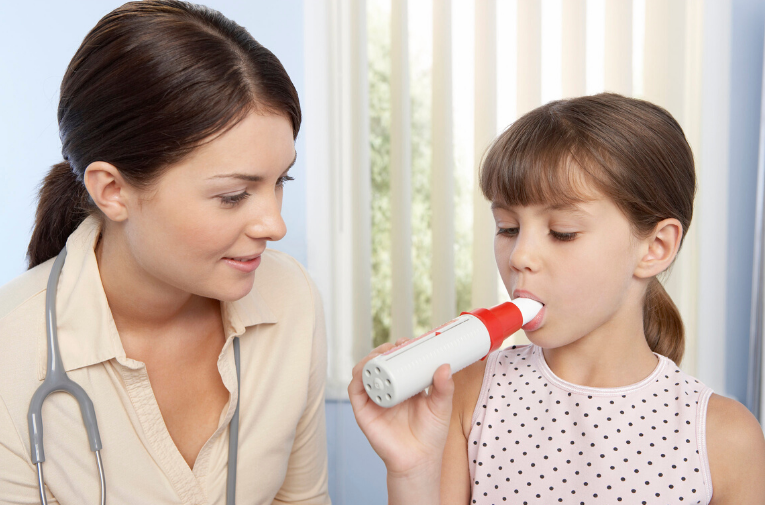Spirometry measures breathing or the volume of inspiration/expiration in ML. Results of a spirometry measurement are referred to as vital capacity (VC). Vital capacity is an indicator of lung function and lower than expected values of VC may occur when a thoracic scoliosis is present.

Patients measuring Cobb >100º, VC may be reduced to < 50º of predicted values; between sixty to ninety degrees, VC is reduced to fifty to sixty percent of predicted values and between 25º -50º, VC is reduced to seventy percent of normal. (Mankin, et al. 1964). (Hawes, “Scoliosis and the Human Spine,” Second Edition, 2003). Simply stated, in those with thoracic curves, the greater the curvature the greater the likelihood of breathing difficulty.
In our clinical experience, most adolescents with thoracic scoliosis are not aware of a deficit in lung function. On the other hand, adults with scoliosis frequently seek treatment as a result of reduced pulmonary function. Other than pain, reduced VC is probably one of the the most common symptoms adult patients mention during the initial health history.
Whether adolescent or adult, after learning Schroth exercises at Scoliosis 3DC® nearly all with thoracic curves have shown a measured improvement in vital capacity and patients report a noticeable improvement in lung function and endurance.
Proper breathing function requires rib mobility and decreased rib mobility is what contributes to reduced pulmonary function in thoracic scoliosis. Diminished lung function may put scoliosis patients at an increased risk for respiratory dysfunction and complications including:
- reduced endurance, implying a reduced capacity for exercise in patients with a greater Cobb angle (Chong et al. 1981)
- increased fatigue
- shortness of breath (dyspnea)
- increased respiratory ailments or infections
- increased heart strain (Weiss and Bickert, 1996)
- diminished quality of life
With the aging/degenerative process, the spine becomes more rigid which, in turn, decreases spine and rib mobility. This can restrict diaphragmatic movement resulting in an overall decrease in lung capacity.
Vertebral rotation, lateral bending, and sagittal plane malalignment also contribute to pulmonary dysfunction. The 3D approach to scoliosis management is effective in counteracting the effects of reduced VC because the spine is addressed in all three planes to improve vertebral joint and rib mobility. For this reason, we take spirometry measurements during the initial evaluation and at Schroth program conclusion and follow-ups.
Schroth rotational breathing aims to improve and maintain the improvement of rib mobility over time. In scoliosis, keeping the chest/ribs from becoming inflexible is critical to avoiding functional problems likely to develop as a patient ages. Unilateral rotational breathing helps aid in rib mobility because symmetrical breathing in the scoliotic patient can feed into curve progression. It is for this reason that patients are instructed in correct breathing patterns by widening the ribs on the concave side and flattening the ventral and dorsal prominences.
In short, improving vital capacity and improving/maintaining rib mobility should be a primary goal for those with thoracic scoliosis. When implementing the Schroth method into daily life the scoliosis patient learns to change his/her breathing pattern(s) so each breath potentially becomes a corrective exercise!

